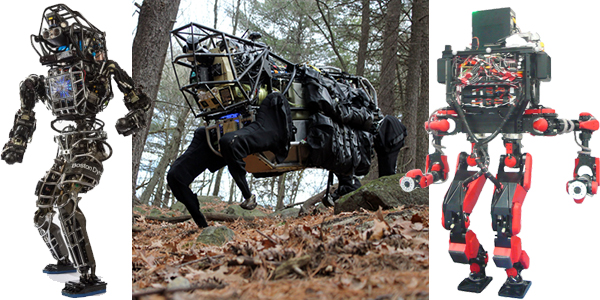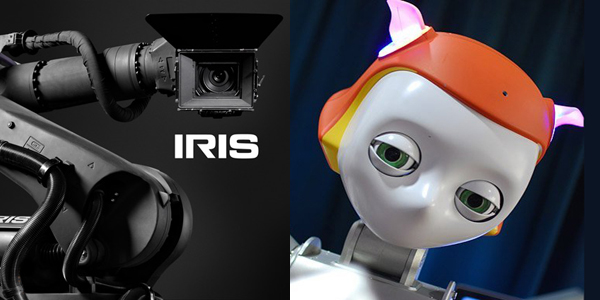Google has been quietly buying up robotics companies out of Japan and the United States. So far they have acquired eight companies for an undisclosed amount. It’s a major move, worth billions of dollars, and one that gives them a leadership position and early monopoly on an industry that doesn’t exist yet.
What their intent is Google won’t say other than to describe it as a “Moonshot” project, a reference to John F. Kennedy’s call to reach beyond the stars and put a man on the moon. The inference is that Google founders Sergey Brin and Larry Page are using their wealth to speed up progress and turn us into a society that co-exists with humanoid robots sooner than expected.
The eight companies Google has bought are very different from each other. Boston Dynamics creates military-grade animalistic robots that move over difficult terrain, Meka designs cute, cartoonish bots to emotionally connect with people, while Industrial Perception are experts in giving robots eyes that let them do human tasks like sorting items on a table, unloading delivery trucks, or even playing billiards. They’ve bought robots that are used in making movies, humanoids made for speed and strength, experts in wheels, arms, and a company that handles marketing and design.
The two things they all have in common though are a focus on making robots that interact with people and an interest in finding commercial, monkey-making roles for them in industry.
Engineer Andy Rubin, who guided Google’s surprising, but very successful move into the smartphone market is now also leading this aggressive move into robotics. It’s clear they want to start a new industry, but how? Many of the acquired companies have previously looked at using humanoid robots to take on drudgery jobs in warehousing, package delivery, retail stocking, and gadget assembly, but it’s hard to think that this is the vision keeping Google founders Brin and Page up late at nights, dreaming.
Here’s a look at some of the robots now working for Google:
Boston Dynamics – WildCat
Inspired by the way big cats like jaguars and cheetahs can move quickly in the wild, WildCat is a military-funded robot designed to carry heavy loads where cars and trucks can’t. It has a camera system that lets it lock onto a person and follow them through muddy terrain, up rough hills, and even across snow, ice, and shallow water. The strangely-familiar appearance and chainsaw-like sounds of WildCat and it’s siblings BigDog and AlphaDog have made them into YouTube Stars. Another in the series, Cheetah, made headlines by sprinting faster than the fastest man alive, Usain Bolt.
Schaft – HRP-2
Robots tend to be either very large and strong or fast and agile, but rarely both. This Mech-like robot from Japan has limbs that can lift very heavy loads, yet move quickly with precision. Originally designed as a research project at the University of Tokyo’s Jouhou System Kougaku (JSK) Laboratory, the group broke away to form a company when it became clear that their breakthrough had commercial potential.
Note: video should automatically skip to Schaft’s segment at 26 minutes.
Meka – Dreamer
With ears that curl and eyes that blink and react quickly like a human’s, Dreamer is designed to explore the ways robots can communicate like a human. Who wants to read a manual or take a course when a robot can simply show you how to use it? Its creator Aaron Edsinger specializes in emotive, puppy-like robots and has launched a second company called Redwood Robotics (also a Google purchase) that makes expressive arms and hands.
Bot & Dolly – Iris
Designed for use in movies like Gravity, Iris is a room-sized robotic arm that can pick up set pieces or actors and move them through the air with all the gently craft of a puppeteer, something a crane or set of wires could never do. It’s what allowed Sandra Bullock and George Clooney to simulate the weightlessness of micro-gravity and the harrowing, spinning-out-of-control movements that made the film so gripping. Capable of lifting 1,000 lbs, it’ll be interesting to see what Google can do with it.
Industrial Perception – PR2
Experts in giving robots a human-like ability to see with two eyes, this group is focused on helping humanoid robots perform complicated tasks normally done by people. The company is a spin-off from a previous Google-funded group called Willow Garage that created the PR2 with the amusing ability to pick up dog poop, play billiards, and fetch beer from a fridge. Under Google, they seem to be focused more on robots that can unload and sort trucks.






